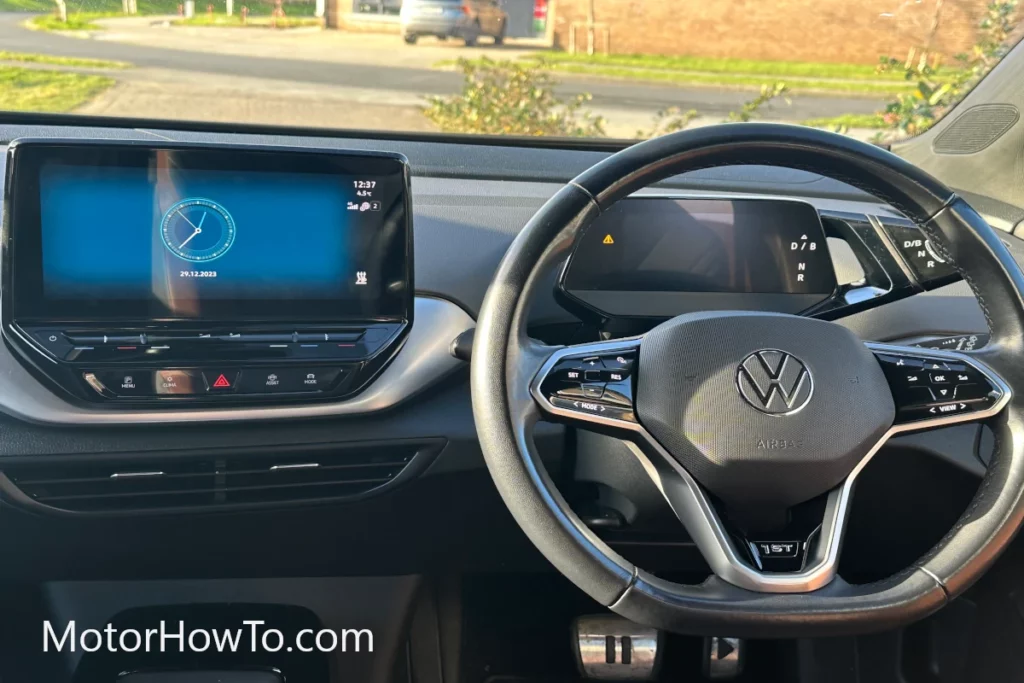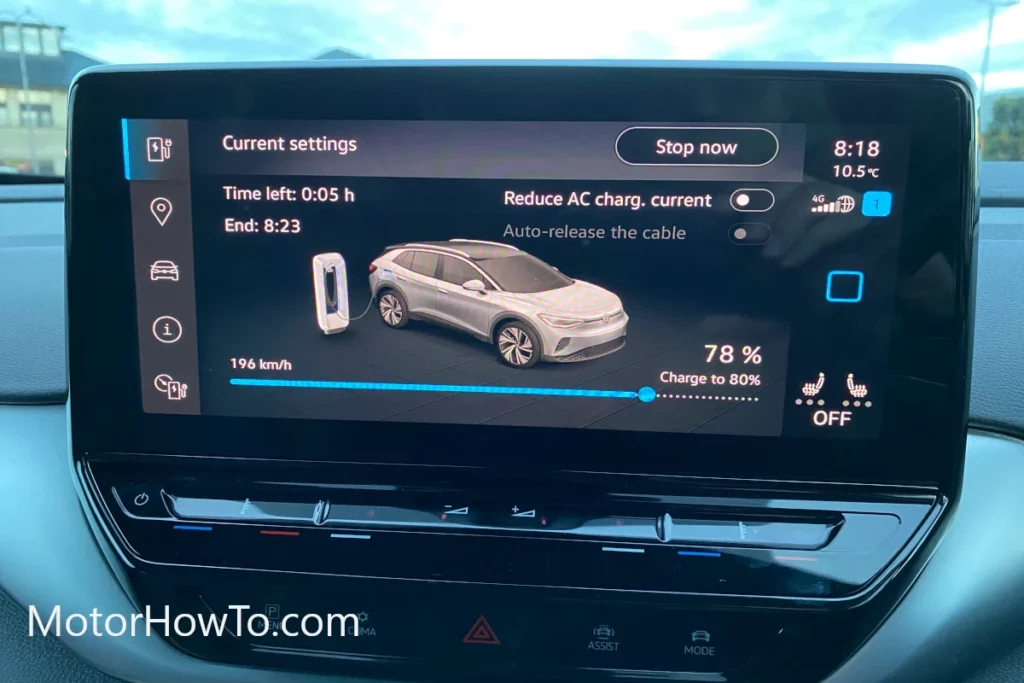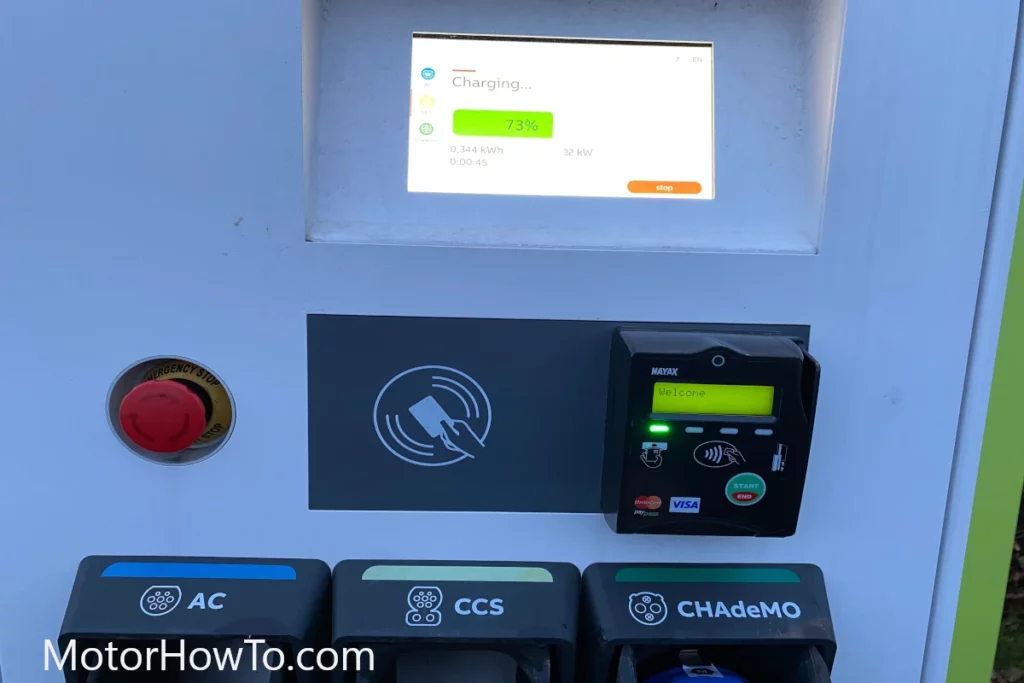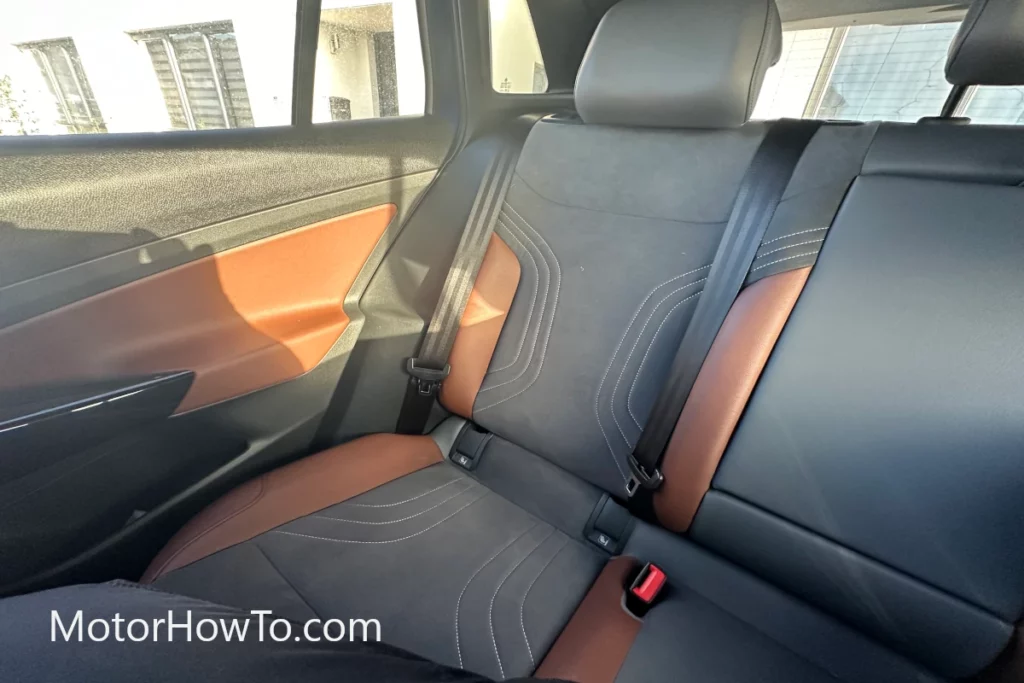In the ever-evolving landscape of electric vehicles, numerous milestones and challenges mark the journey toward sustainability.
Among these, the concept of long-distance travel in electric cars is a topic that piques the interest of both automotive enthusiasts and the environmentally conscious.
This narrative delves into technology, efficiency, and comfort as we explore a key player in this field.
Focusing on practicality and innovation, our examination is not just about numbers and statistics but also about the experience and feasibility of embracing a greener future on the road.
The Volkswagen ID series offers a commendable balance of range, comfort, and charging options, making it a viable option for long-distance travel, especially with its growing charging infrastructure.

As you continue reading, expect an in-depth exploration of various facets that contribute to the long-distance travel capabilities of the Volkswagen ID series.
We’ll delve into battery life, charging infrastructure, in-car comfort, and technology features.
Additionally, real-world experiences and expert opinions will be woven into our analysis, providing a comprehensive view beyond mere specifications.
Related:
- Compatibility of VW ID with Different Charging Stations (Explained)
- How Regenerative Braking Works in the VW ID (Efficiency and Use)
- Analyzing the Cost of Ownership for Volkswagen ID Vehicles (Answered)
Battery Performance and Range Essentials for Long-Distance Travel

Embarking on a journey in an electric vehicle (EV) brings to the forefront two vital aspects: battery performance and driving range.
The Volkswagen ID series, emblematic of modern EV innovation, has a high-caliber battery system meticulously engineered for extended travel.
This exploration begins with a deep dive into the battery’s architecture – a critical element that dictates the travel distance and enhances the overall driving dynamics.
The battery’s configuration, built on advanced chemistry and effective management systems, underpins the vehicle’s capability to sustain prolonged journeys.
An EV’s range is a crucial parameter for consumers, especially when considering long-distance travel. In the case of the Volkswagen ID, the range isn’t just a theoretical maximum; it’s a practical indicator of the vehicle’s endurance.
Factors such as driving habits, terrain, climatic conditions, and even the vehicle’s load significantly influence the distance the car can cover on a single charge.
This range, stemming from a harmonious blend of engineering excellence and energy-efficient design, is vital in determining the ID’s suitability for long-haul journeys.
Below are some of the key points to remember:
Battery Composition and Technology:
The Volkswagen ID series is powered by state-of-the-art lithium-ion batteries.
These batteries are renowned for their high energy density, meaning they can store more energy in a smaller space, which is crucial for maximizing range.
Additionally, their longevity ensures the vehicle’s performance doesn’t degrade significantly over time.
Energy Efficiency:
One of the standout features of the ID series is its regenerative braking system.
This system recovers energy that would otherwise be lost during braking and redirects it back to the battery.
Coupled with the car’s aerodynamic design, which reduces drag and thus energy consumption, these features significantly boost the vehicle’s overall efficiency and range.
Charging Speed and Options:
The fast charging capability of the Volkswagen ID series is a game-changer for long-distance travel.
This feature allows the vehicle to recharge a significant portion of its battery quickly, making longer trips more feasible.
Additionally, the expanding charging station network adds to the convenience, reducing range anxiety for drivers.
Real-World Range:
While the advertised range of the ID series is impressive, real-world conditions can affect it.
This section will explore how different driving speeds, ambient temperatures, and heavier loads impact the battery’s performance.
Understanding these factors is crucial for drivers to gauge how far they can realistically travel under varying conditions.
The Volkswagen ID series stands as a beacon of EV innovation and a practical solution for long-distance travel.
With its advanced battery technology, efficient energy use, rapid charging capabilities, and a range that meets real-world demands, the ID series exemplifies how modern electric vehicles are eco-friendly alternatives and viable options for extensive road trips.
Exploring the Charging Infrastructure and Its Convenience

The growth of electric vehicle (EV) charging infrastructure is crucial in the wider adoption of EVs like the Volkswagen ID for long-distance travel.
Recent years have witnessed a significant expansion in charging networks globally, a trend that directly impacts the practicality of owning and operating an EV.
For Volkswagen ID drivers, this expansion means increased accessibility to charging stations, reducing the anxiety often associated with finding a place to recharge during long trips.
Charging Speeds and Types
When discussing the charging infrastructure, it’s important to differentiate between the various types of charging available.
There are typically three levels of EV charging: Level 1 (standard household outlets), Level 2 (higher voltage residential and public chargers), and DC fast chargers.
The Volkswagen ID benefits particularly from DC fast charging stations, which can replenish a significant portion of the battery in a fraction of the time Level 1 or Level 2 chargers take.
This rapid charging capability is essential for long-distance travel, allowing quick stops to extend the journey without lengthy delays.
Location Convenience and Availability
An essential aspect of the charging infrastructure is the number of charging stations, location, and availability.
Strategic placement along major highways, in urban centers, and at popular destinations ensures drivers can confidently plan routes, knowing that charging stations are available where needed.
Furthermore, integrating charging station locators in-vehicle navigation systems and smartphone apps has made finding these facilities more convenient.
Future Developments and Innovations
Looking ahead, the charging infrastructure is poised for further innovation and development.
Anticipated advancements include faster-charging technologies, greater station density, and improved integration with renewable energy sources.
For Volkswagen ID owners, the network they rely on for long-distance travel will only become more robust and convenient over time.
The charging infrastructure for EVs like the Volkswagen ID is dynamic and rapidly evolving.
This domain’s continued growth and technological advancements make long-distance travel increasingly feasible and convenient for EV drivers.
With every new charging station and every technological breakthrough, the horizon of electric vehicle travel extends, bringing a future of cleaner, more sustainable transportation ever closer.
In-car Comfort and Driving Dynamics

A critical aspect of any long-distance vehicle is its comfort level, and the Volkswagen ID excels in this area with its thoughtfully designed interior.
The ergonomics of the ID series focus on creating a spacious, user-friendly environment.
Seats are designed to provide support and comfort even over long periods, which is crucial for those longer journeys.
The minimalist yet functional design reduces clutter, creating a more relaxed and airy cabin space.
Attention to detail in material selection and build quality contributes to an overall sense of comfort and luxury, enhancing the driving experience.
Climate Control and Ambient Settings
Climate control systems in the Volkswagen ID play a vital role in maintaining in-car comfort.
Advanced systems allow for individualized settings, ensuring all passengers can tailor the environment to their preferences.
Features like heated seats and steering wheels add extra comfort in colder conditions.
The inclusion of ambient lighting options also allows drivers to customize the interior atmosphere, creating a soothing environment that can reduce fatigue during long drives.
Ride Quality and Handling
The Volkswagen ID series offers a balanced and smooth ride regarding driving dynamics.
The electric powertrain ensures immediate power delivery, providing a responsive and engaging driving experience.
The low center of gravity, typical of EVs due to battery placement, improves handling and stability, making the ID adept at navigating city streets and highways.
Suspension tuning in the ID series is geared towards absorbing road irregularities, ensuring a comfortable ride without compromising the vehicle’s handling capabilities.
Noise, Vibration, and Harshness (NVH) Control
Electric vehicles inherently have an advantage in reducing noise, vibration, and harshness (NVH), and the Volkswagen ID is no exception.
The near-silent operation of the electric motor contributes to a serene driving experience.
Additional NVH control measures, such as sound-deadening materials and aerodynamic design, further minimize external noise, ensuring a quiet cabin environment.
This reduction in noise and vibration is particularly beneficial on long journeys, as it lessens driver fatigue and enhances passenger comfort.
The Volkswagen ID series stands out for its electric propulsion and focus on in-car comfort and refined driving dynamics.
The combination of ergonomic design, advanced climate control, smooth handling, and NVH control creates an environment that makes long-distance travel not just feasible but enjoyable.
Integral to the overall experience, these factors underscore the ID’s position as a top contender in long-distance electric travel.
Advanced Technology and Safety Features
The Volkswagen ID series showcases advanced technology designed for convenience and to augment the driving experience.
These innovations serve multiple purposes, from enhancing driver comfort to improving vehicle performance.
Key technological features include:
- Infotainment System: A high-resolution touchscreen display acts as the control center, offering intuitive access to navigation, entertainment, and vehicle settings.
- Connectivity Features: Integration with smartphones and online services ensures that drivers stay connected and can access a range of convenient features remotely.
- Driver Assistance Systems: Advanced systems like adaptive cruise control, lane-keeping assist, and parking aids significantly reduce driver effort and enhance safety.
Safety as a Priority
Safety is paramount in the Volkswagen ID series, which incorporates various features to protect occupants and other road users. Some of the notable safety technologies are:
- Robust Structural Design: The vehicle’s structure is engineered to absorb impacts effectively, offering superior protection during a collision.
- Advanced Airbag System: Multiple airbags throughout the cabin provide comprehensive protection for all occupants.
- Active Safety Features: These include emergency braking systems, pedestrian detection, and cross-traffic alerts, which work together to prevent accidents.
Enhanced Driver Assistance and Autonomous Features
The ID series is at the forefront of incorporating semi-autonomous driving capabilities, taking driver assistance to the next level. This includes:
- Proactive Driver Assist: This system can adjust speed based on traffic conditions and navigate traffic jams with minimal driver input.
- Intelligent Navigation: The system suggests the most efficient routes, considering traffic patterns and charging station locations.
Integration with Electric Vehicle Technology
Integrating these advanced features with the electric drivetrain of the ID series further enhances the vehicle’s efficiency and sustainability. For example:
- Energy Efficient Systems: Features like regenerative braking not only provide safety benefits but also contribute to the vehicle’s overall energy efficiency.
- Smart Battery Management: The vehicle’s technology constantly monitors and optimizes battery usage to maximize range and life.
The Volkswagen ID series represents a harmonious blend of advanced technology and safety features.
These innovations make driving more enjoyable and convenient and contribute to a safer and more sustainable future.
As electric vehicles evolve, the ID series sets a benchmark in integrating technology seamlessly into the driving experience.
Sources:
VW Id Buzz: Maximize Your Range at 110 km/h
World premiere for the efficiency champion: Volkswagen ID.7 with a range of up to 700 km (WLTP)
VW ID.BUZZ 2023 in review – A pure style homage or a bus with utility?



